What is an AI Robot? Definition and Applications

What is an AI Robot? Definition and Applications
#An AI Robot (Artificial Intelligence Robot) is a combination of two important technological fields: robotics and artificial intelligence.
These robots are not only capable of performing physical tasks but also use AI algorithms for learning, decision-making, and adapting to their environment.
In fact, an AI robot operates beyond a pre-programmed machine, and by analyzing data and its own experiences, it can act independently and improve its performance.
Robotics and Artificial Intelligence are the two fundamental pillars of this technology.
The applications of AI robots are vast and diverse.
From industry and manufacturing to medicine, agriculture, customer services, and even space exploration, these robots play a significant role.
In industry, AI robots can perform repetitive and dangerous tasks with high precision and speed; in medicine, they can assist surgeons in complex operations; in agriculture, they can optimize resource consumption and increase productivity; in customer services, they can answer questions and solve problems; and in space exploration, they can help collect information and samples.
AI robots, by offering innovative solutions, contribute to improving the quality of human life and the progress of societies.
In summary, an AI robot is not just an advanced automation tool, but an intelligent collaborator that can assist humans in various fields and contribute to the progress and development of societies.
The development of AI robots is considered a significant transformation in the field of technology.
Are you losing business opportunities because of an outdated website? With Rasavab, solve the problem of not attracting potential customers through your website forever!
✅ Attract more high-quality leads
✅ Increase brand credibility in the eyes of customers
⚡ Get free consultation for corporate website design
Types of AI Robots Based on Application
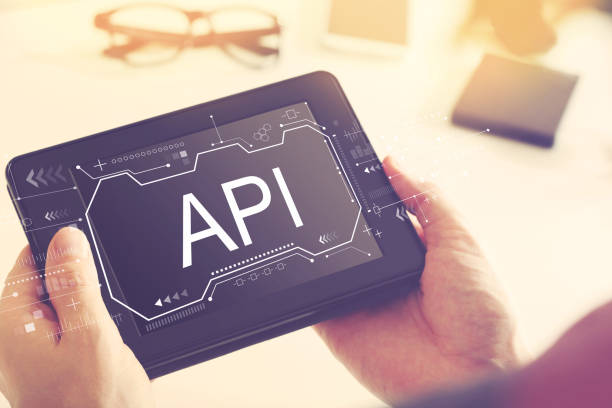
Types of AI Robots Based on Application
AI robots are divided into different types based on their application and the tasks they perform.
Some of the most important types of AI robots include:
- Industrial Robots: These robots are used in factories and production lines to perform repetitive, precise, and heavy tasks.
They can perform welding, painting, packaging, and assembly of components with high speed and accuracy.
Industrial AI robots help increase productivity and reduce costs. - Medical Robots: These robots are used in hospitals and treatment centers to assist surgeons in complex operations, provide services to patients, and perform care tasks.
They can increase surgical precision, reduce patient recovery time, and prevent the transmission of infections.
Surgical robots are an example of medical AI robots. - Service Robots: These robots are used in hotels, restaurants, shops, and homes to provide customer services and assist individuals.
They can deliver orders, clean, provide information, and care for the elderly and children.
Service AI robots help improve customer experience and enhance the quality of life for individuals. - Agricultural Robots: These robots are used in farms and gardens to perform agricultural tasks such as planting, cultivating, and harvesting crops.
They can optimize water and fertilizer consumption, identify and control pests, and help increase productivity and reduce costs. - Space Robots: These robots are used in space missions for collecting information, sampling, and conducting experiments.
They can operate independently in harsh and dangerous space conditions and help in the discovery of planets and celestial bodies.
Each of these types of AI robots is designed and built according to its specific needs and requirements, utilizing various AI algorithms and robotic techniques.
The development of AI robots in each of these areas contributes to the advancement and improvement of performance in that field.
Main Components of AI Robots: Hardware and Software Review
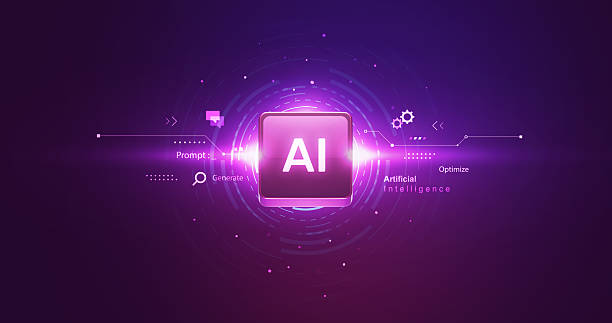
Main Components of AI Robots: Hardware and Software Review
An AI robot consists of two main parts: hardware and software.
Hardware includes the physical components of the robot such as sensors, actuators, controllers, and power sources, while software includes AI algorithms, control programs, and user interfaces.
These two parts work together to enable the correct and intelligent operation of the AI robot.
The hardware of an AI robot plays a crucial role in collecting information from the environment, movement, and performing physical tasks.
Sensors gather various information such as temperature, light, sound, image, and distance, and send it to the controllers.
Actuators, upon receiving commands from controllers, perform various movements such as rotation, opening and closing, raising and lowering, etc.
Controllers act as the robot’s brain, processing information received from sensors and executing control programs to manage the robot’s performance.
The power supply also provides the necessary energy for the operation of all hardware components.
The software of an AI robot plays a significant role in decision-making, learning, and adapting to the environment.
AI algorithms such as machine learning, neural networks, and natural language processing enable the robot to learn from data, identify patterns, make optimal decisions, and communicate with humans.
Control programs also manage the robot’s performance based on AI algorithms and information received from sensors.
User interfaces also allow humans to interact with the robot, send commands, and receive information.
| Hardware Components | Description |
|---|---|
| Sensors | Collecting environmental information (temperature, light, sound, image) |
| Actuators | Creating physical movements (rotation, opening and closing) |
| Controllers | Processing information and controlling robot performance |
| Power Supply | Providing necessary energy for components |
AI Algorithms Used in Robots

AI Algorithms Used in Robots
AI robots utilize various artificial intelligence algorithms to perform different tasks.
Some of the most important of these algorithms include:
- Machine Learning: These algorithms enable the robot to learn from data and improve its performance.
Machine learning includes various methods such as supervised learning, unsupervised learning, and reinforcement learning.
In supervised learning, the robot is trained using labeled data; in unsupervised learning, the robot identifies patterns in unlabeled data; and in reinforcement learning, the robot learns optimal behaviors through trial and error. - Neural Networks: These algorithms are inspired by the structure of the human brain and are used to solve complex problems such as image recognition, natural language processing, and robot control.
Neural networks consist of various layers of neurons that communicate with each other and process information. - Natural Language Processing: These algorithms enable the robot to understand human language and respond to it.
Natural language processing includes various methods such as syntactic analysis, semantic analysis, and natural language generation. - Planning: These algorithms enable the robot to create operational plans to achieve its goals.
Planning includes various methods such as search, logic, and decision-making. - Computer Vision: These algorithms enable the robot to understand images and identify objects.
Computer vision includes various methods such as edge detection, feature detection, and pattern recognition.
The selection of an appropriate algorithm for an AI robot depends on the type of task and the environment in which the robot operates.
The development of new algorithms and the improvement of existing ones contribute to increasing the capabilities and applications of AI robots.
Is your online sales not as expected? With Rasavab, solve the problem of low sales and poor user experience forever!
✅ Increase visitor-to-customer conversion rate
✅ Create a pleasant user experience and boost customer trust
⚡ Act now to receive free consultation!
Challenges and Limitations of AI Robots
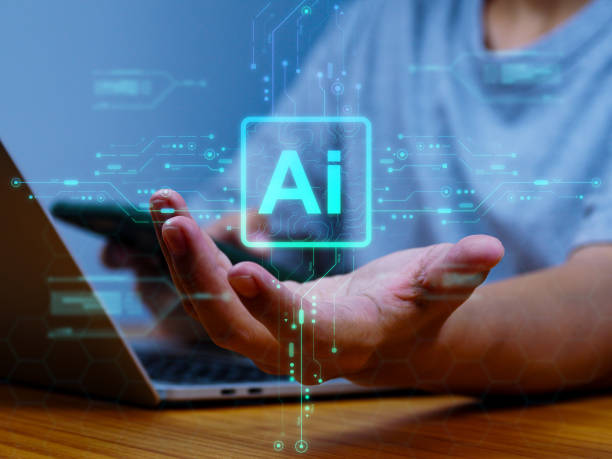
Challenges and Limitations of AI Robots
Despite significant advancements in the field of AI robots, there are still challenges and limitations that hinder their widespread and more efficient use.
Some of the most important of these challenges and limitations include:
- High Cost: The manufacturing and maintenance of AI robots are usually very expensive.
Advanced hardware components, complex AI algorithms, and skilled specialists required for the design, construction, and maintenance of these robots entail significant costs.
This high cost hinders the widespread use of AI robots in many industries and applications. - Complexity: The design and construction of AI robots are highly complex, requiring knowledge and expertise in various fields such as robotics, artificial intelligence, electronics, mechanics, and software.
This complexity makes the development and maintenance of AI robots difficult and time-consuming. - Technical Limitations: AI robots still face limitations in some areas such as natural language understanding, emotion recognition, and decision-making in complex situations.
AI algorithms are not yet intelligent enough to perform all human tasks with high accuracy and efficiency. - Ethical Concerns: The use of AI robots brings various ethical concerns.
Some of these concerns include job displacement, discrimination, privacy, and control.
It is necessary to formulate laws and regulations for the responsible and ethical use of AI robots to prevent potential problems and harms. - Security: AI robots are vulnerable to cyberattacks and misuse.
Hackers can disrupt AI robot control systems, steal information, or even use them for malicious activities.
Appropriate security measures must be taken to protect AI robots against these threats.
Overcoming these challenges and limitations requires joint efforts from researchers, engineers, policymakers, and ethicists.
By developing new technologies, improving AI algorithms, and formulating appropriate laws and regulations, the benefits of AI robots can be fully realized, and potential problems and harms can be prevented.
The Future of AI Robots: Predicting Developments and Impacts

The Future of AI Robots: Predicting Developments and Impacts
The future of AI robots is very bright and full of developments.
With accelerating advancements in artificial intelligence and robotics, AI robots are expected to play a much more significant role in human lives in the near future and bring about remarkable transformations across various industries.
AI robots are rapidly developing and will have profound impacts on human life.
Some of the most important developments and impacts expected in the future regarding AI robots include:
- Increased Intelligence: AI robots will become much more intelligent in the future and will be able to perform more complex tasks with high accuracy and efficiency.
AI algorithms will improve, and robots will be able to learn from their experiences, identify patterns, and make optimal decisions. - Expansion of Applications: The applications of AI robots will become much more widespread in the future, and these robots will be used in various industries such as manufacturing, medicine, agriculture, services, education, transportation, and even arts and entertainment.
AI robots will assist humans in performing repetitive, dangerous, and complex tasks, contributing to an improved quality of life. - Improved Human Interaction: AI robots will be able to interact with humans more naturally and effectively in the future.
They will be able to understand human language, recognize emotions, and respond appropriately.
This will enable AI robots to serve as valuable collaborators and companions for humans in various environments. - Cost Reduction: With technological advancements and increased production, the cost of manufacturing and maintaining AI robots will decrease in the future.
This will make AI robots more affordable for businesses and individuals, thereby expanding their applications. - Development of Autonomous Robots: AI robots in the future will be capable of operating autonomously without human intervention.
They will be able to perceive their environment, plan, and make necessary decisions.
This will enable AI robots to operate more effectively in hazardous and inaccessible environments.
However, it is also essential to address the ethical challenges and concerns related to AI robots and take necessary measures for the responsible and ethical use of this technology.
Through collaboration among researchers, engineers, policymakers, and ethicists, the benefits of AI robots can be fully realized, and potential problems and harms can be prevented.
The future belongs to AI robots if managed correctly.
AI Robots in Industry: Review of Use Cases and Benefits
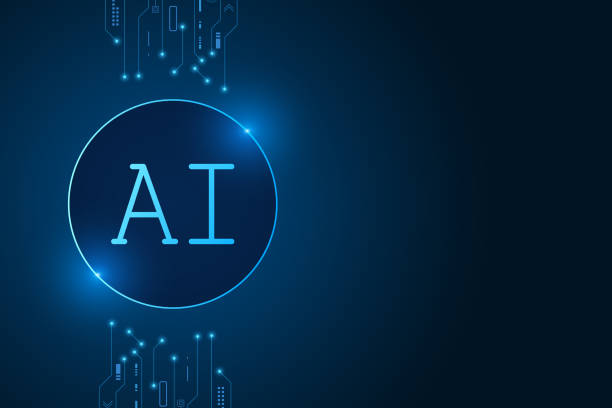
AI Robots in Industry: Review of Use Cases and Benefits
Industry is one of the fields where AI robots play a very important role.
AI robots are used in industry for various tasks such as manufacturing, packaging, warehousing, quality control, and maintenance and repair.
The use of AI robots in industry brings numerous benefits, including increased productivity, reduced costs, improved quality, enhanced safety, and greater flexibility.
Industrial AI robots have created a major revolution in the field of production and industry.
- Manufacturing: AI robots can be used in production lines for repetitive and precise tasks such as welding, painting, assembling components, and packaging products.
They can work at high speeds and accuracy, helping to increase productivity and reduce costs. - Packaging: AI robots can be used in packaging lines for packaging various products.
They can package products neatly and securely, helping to increase the speed and efficiency of the packaging line. - Warehousing: AI robots can be used in warehouses for moving and storing products.
They can automatically transfer products from one location to another, helping with inventory management and reducing warehousing costs. - Quality Control: AI robots can be used for quality control of products.
They can accurately inspect products and identify defects and flaws.
This helps improve product quality and reduce waste. - Maintenance and Repairs: AI robots can be used for the maintenance and repair of industrial machinery and equipment.
They can regularly inspect machinery and identify problems.
This helps reduce breakdowns and extend the useful life of machinery.
The use of AI robots in industry has enabled companies to produce higher-quality products at lower costs and increase their market competitiveness.
Furthermore, the use of AI robots has led to increased worker safety and the prevention of accidents and injuries.
Industrial AI robots have brought fundamental changes to industry, and this trend continues.
AI Robots in Medicine: Applications and Benefits

AI Robots in Medicine: Applications and Benefits
Medicine is another field where AI robots play a very important role.
AI robots are used in medicine for various tasks such as surgery, disease diagnosis, treatment, rehabilitation, and patient care.
The use of AI robots in medicine offers numerous benefits, including increased accuracy, reduced errors, decreased pain and bleeding, shorter recovery times, and improved access to medical services.
AI robots represent a significant and efficient transformation in the medical field.
- Surgery: AI robots can be used for complex and precise surgeries such as heart surgery, neurosurgery, and cancer surgery.
They can create incisions with high accuracy and remove damaged tissues.
AI robots help surgeons perform safer and more effective operations. - Disease Diagnosis: AI robots can be used for diagnosing diseases by analyzing medical images such as X-rays, MRI scans, and CT scans.
They can identify abnormal patterns in images and assist doctors in early and accurate disease diagnosis. - Treatment: AI robots can be used to deliver various treatments such as radiation therapy and chemotherapy.
They can precisely adjust drug dosages and prevent damage to healthy tissues. - Rehabilitation: AI robots can be used for rehabilitating patients after brain and spinal cord injuries.
They can help patients regain their motor skills and achieve greater independence. - Patient Care: AI robots can be used for patient care in hospitals and homes.
They can monitor patients’ vital signs, administer medications, and assist them with daily tasks.
The use of AI robots in medicine has enabled doctors to diagnose diseases with greater accuracy, provide more effective treatments, and offer better patient care.
Furthermore, the use of AI robots has made medical services accessible to more people, especially in remote and underserved areas.
AI robots in medicine contribute to improving the health level of society.
| Field | Applications |
|---|---|
| Surgery | Complex and precise surgeries (heart, brain, cancer) |
| Diagnosis | Early and accurate disease diagnosis using medical imaging |
| Treatment | Precise and safe radiation and chemotherapy |
| Rehabilitation | Assisting in motor skill recovery after injury |
| Care | Patient care in hospitals and homes |
Does your current website truly reflect your brand’s credibility? Or does it scare away potential customers?
Rasavab, with years of experience in designing professional corporate websites, is your comprehensive solution.
✅ A modern, beautiful website aligned with your brand identity
✅ Significant increase in lead generation and new customer acquisition
⚡ Contact Rasavab now for a free corporate website design consultation!
Ethical Aspects of Using AI Robots
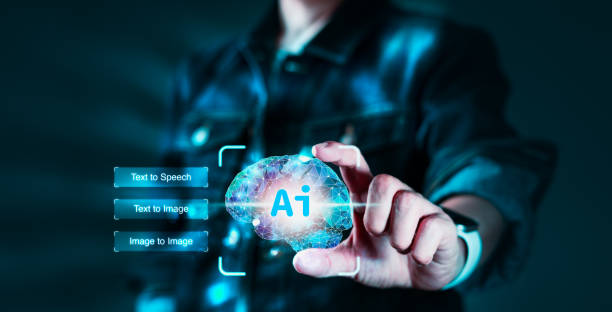
Ethical Aspects of Using AI Robots
The use of AI robots, like any other advanced technology, brings significant ethical aspects that must be considered.
These aspects include issues such as accountability, privacy, security, fairness and discrimination, and social and economic impacts.
It is necessary to ensure the responsible and ethical use of AI robots by formulating appropriate laws and regulations and by public education and awareness.
AI robots must be used within the framework of ethical and legal principles.
- Accountability: If an AI robot causes damage or harm, who will be responsible? Is the robot’s manufacturer, the robot’s user, or the robot itself responsible? It is necessary to formulate laws and regulations to determine responsibility in these cases.
- Privacy: AI robots are capable of collecting and processing individuals’ personal information.
How can individuals’ privacy be protected against the misuse of this information? It is necessary to formulate laws and regulations to limit the collection and use of personal information by AI robots. - Security: AI robots are vulnerable to cyberattacks and misuse.
How can AI robots be protected against these threats? Appropriate security measures must be taken to protect AI robots against cyberattacks. - Fairness and Discrimination: AI algorithms may contain unconscious biases that lead to discrimination in decision-making.
How can this discrimination be prevented? It is necessary to design AI algorithms to operate fairly and impartially. - Social and Economic Impacts: The use of AI robots may lead to job displacement and increased social inequalities.
How can these negative impacts be mitigated? It is necessary to adopt appropriate social and economic policies to support workers and reduce inequalities.
Given the importance of these ethical aspects, further research and investigation in this area are necessary, and appropriate solutions for the responsible and ethical use of AI robots should be provided through collaboration among various experts.
AI robots are powerful tools that can contribute to the progress and improvement of human lives, but their use must be carried out with care and responsibility.
The development and use of AI robots must be conducted with consideration for ethical principles and respect for human rights.
How AI Robots Learn and Are Trained

How AI Robots Learn and Are Trained
Learning and training AI robots is one of the most crucial aspects of developing this technology.
AI robots require learning and training to perform their tasks correctly.
There are various methods for learning and training AI robots, including supervised learning, unsupervised learning, and reinforcement learning.
Machine Learning is the foundation of AI robot training.
- Supervised Learning: In this method, the AI robot is trained using labeled data.
Labeled data includes expected inputs and outputs.
By examining this data, the robot learns patterns that help it associate new inputs with correct outputs in the future. - Unsupervised Learning: In this method, the AI robot is trained using unlabeled data.
By examining this data, the robot discovers hidden patterns and structures.
This method is very useful for identifying patterns and clustering data. - Reinforcement Learning: In this method, the AI robot learns through trial and error.
The robot is placed in an environment and receives rewards or penalties for performing various actions.
By learning which actions lead to rewards and which lead to penalties, the robot learns optimal behaviors.
In addition to these methods, other techniques such as deep learning, neural networks, and genetic algorithms are also used for learning and training AI robots.
The selection of the appropriate method for learning and training an AI robot depends on the type of task and the environment in which the robot operates.
AI robot learning methods are advancing day by day.
In summary, training AI robots is a complex and multifaceted process that requires knowledge and expertise in various fields such as artificial intelligence, robotics, and computer science.
By developing new methods and improving existing ones, smarter and more efficient robots capable of performing complex and diverse tasks can be built.
Frequently Asked Questions
| Question | Answer |
|---|---|
| What is an AI Robot? | An AI Robot (Artificial Intelligence Robot) is a machine capable of understanding its environment, reasoning, learning, and making decisions to perform tasks autonomously. |
| What is the difference between regular robots and AI robots? | Regular robots perform repetitive tasks based on prior programming, whereas AI robots can learn from experience, interact dynamically with their environment, and even behave in ways that resemble human intelligence. |
| What are the main applications of AI robots? | They are used in industries (manufacturing, assembly), medicine (surgery, diagnosis), services (customer support, domestic), exploration (space, underwater), and many other fields. |
| What technologies are used in building AI robots? | Machine Learning, Computer Vision, Natural Language Processing, Deep Learning, and Robotics are among the key technologies. |
| Can AI robots have emotions? | Currently, robots do not have emotions in the human sense. They can recognize and react to emotions, but they do not experience emotions themselves. |
| What are the main challenges in developing AI robots? | Safety, reliability, ethics, autonomy, adaptability to complex environments, and natural human interaction are among the significant challenges. |
| How are AI robots trained? | They are usually trained using large volumes of data, machine learning, and deep learning algorithms to identify patterns and make decisions. |
| Examples of AI robots in daily life? | Smart robotic vacuum cleaners, customer support chatbots, self-driving cars, and surgical robots in hospitals. |
| Are AI robots a threat to human jobs? | Some repetitive jobs may be automated, but at the same time, robots can increase productivity and create new jobs in the development, maintenance, and supervision of these systems. |
| How is the future of AI robots predicted? | They are expected to become smarter, more autonomous, and capable of performing more complex tasks, engaging in closer interaction with humans in various environments. |
And other advertising services from Rasavab Advertising Agency:
- Smart Advertorial: A specialized service for digital brand growth based on Google Ads management.
- Smart Digital Advertising: A fast and efficient solution for online growth focusing on custom programming.
- Smart Custom Software: An innovative service to increase customer acquisition through the use of real data.
- Smart Brand Identity: A combination of creativity and technology to boost sales through attractive UI design.
- Smart Direct Marketing: A blend of creativity and technology for customer acquisition through SEO-driven content strategy.
And over a hundred other services in the field of internet advertising, advertising consultation, and organizational solutions.
Internet Advertising | Advertising Strategy | Advertorials
Sources
Introduction to AI Robots on Digikala MagApplications of Smart Robots from ISNA’s PerspectiveHow AI Robots Work on ZoomitThe Future of AI Robots in Iran on Virgool
? Ready to transform your business in the digital world? Rasavab Afarin Digital Marketing Agency, specializing in responsive website design, SEO optimization, and professional social media management, assists you on your path to growth and achieving major goals.
📍 Tehran, Mirdamad Street, next to Bank Markazi, Kazerun Jonubi Alley, Ramin Alley, No. 6

